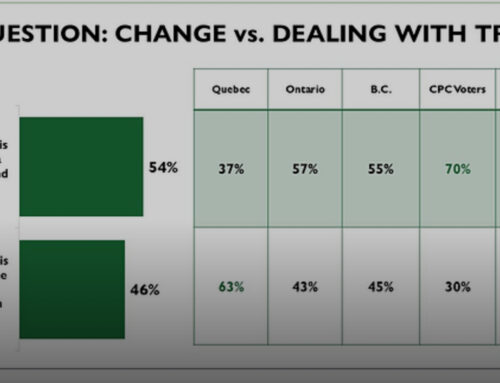Individual traits, not environment, predict gun violence among gun-carrying youth
February 9, 2025
A new study of young males with a history of serious offenses finds that certain individual characteristics, rather than environmental influences, are strongly associated with gun violence among those who already carry firearms. While both individual and environmental factors were linked to gun violence in the broader group of at-risk youth, only the perceived rewards of crime and a lack of empathy were significant predictors of gun violence among those who actively carried guns. This suggests that different approaches may be needed to prevent gun violence among those who already carry guns.
The research was published in the journal Criminal Justice and Behavior.
Gun violence is a complex problem stemming from a combination of personal characteristics and social surroundings. While a lot of research has examined these factors in relation to adolescent gun use, relatively little attention has been paid to youth who actively carry firearms. Prior research reveals that a lot of youths who carry guns never use them in any violent situation. Understanding the distinctions between these groups — those who carry guns and those who carry and use guns in violent acts — is essential for designing effective interventions.
Existing research on gun violence primarily relies on data from community samples. This presents questions around whether the findings apply to populations with the highest risk, such as individuals with a history of offenses. To address this gap, the current research focused on a sample of young people with a history of serious offenses, including a subgroup who actively carried firearms.
“It is well-documented that violent crime is highly concentrated among a relatively small number of individuals who are disproportionately exposed to environments conducive to violence,” explained study author Sultan Altikriti, a postdoctoral fellow at the Gun Violence Research Center in the School of Public Health at Rutgers University.
“Some of the same risk factors for violence have also been found to increase the propensity to carry firearms, which is one of the most prominent predictors of gun violence. That said, only a few of those who carry firearms, even illegally, end up engaging in gun violence. What we hoped to do in this study was to separate the effects of predictors of carrying propensity from predictors of gun violence. By looking at only those who carry firearms, we aimed to disentangle the effects of gun access and carrying from gun violence.”
“A good analogy for our approach in this study is examining the causes of car accidents. To do this effectively, one must focus solely on those with access to a car. Including those without access to a car or who rarely drive would bias the results by capturing car access or mileage driven rather than a propensity for car accidents themselves.”
The study utilized data from the “Pathways to Desistance” project, a long-term study that followed young people aged 14 to 19 who had been convicted of a serious offense in either Maricopa County, Arizona, or Philadelphia, Pennsylvania. The present study focused on the 1,170 males in the sample, as young men account for more than 80% of gun violence injuries and fatalities. These participants were tracked for seven years, with data collected at ten different time points.
The researchers created an “analytic sample” of 1,135 individuals with 7,711 person-wave observations. This means that for each person, there were multiple observations over time. Some analyses focused on a subgroup of 481 youth who actively carried firearms during at least one of the observation periods.
The key outcome variable was “gun violence,” defined as whether a participant had shot someone, shot at someone, or committed a robbery using a firearm during the observation period. Because gun violence was relatively rare, it was measured as a simple “yes” or “no.”
“Gun carrying” was also measured as a “yes” or “no” variable, indicating whether the participant had carried a gun during the observation period. It’s important to note that for this particular group of young people, any gun carrying was likely illegal, as they were prohibited from obtaining a license due to their prior convictions.
The study found that for the entire sample of at-risk young men, both environmental and individual factors played a role in predicting gun violence. Specifically, young people were more likely to engage in gun violence if they reported carrying a gun, perceived easy access to guns in their neighborhood, had previously engaged in gun violence, were involved in gangs, witnessed violence, had peers who carried guns, perceived personal rewards from crime, and exhibited callous traits.
However, when the researchers focused only on the subgroup of young people who were actively carrying guns, the picture changed. Among this group, most of the environmental factors were no longer significant predictors of gun violence. Instead, only two individual factors remained significant: the perceived personal rewards of crime and callous traits. In other words, for young people who were already carrying guns, it was primarily their individual characteristics – specifically, the extent to which they found crime rewarding and lacked empathy – that predicted whether they would use a gun violently.
These findings suggest that different factors may be at play in leading to gun violence depending on whether a young person is simply at risk or is already carrying a firearm. Environmental factors might increase the general risk of gun violence, perhaps by making it more likely that a young person will start carrying a gun in the first place. However, once a young person is already carrying a gun, it seems that individual traits become more important in determining whether they will actually use that gun in a violent way.
“If I had to give a reason why individual factors play a relatively stronger role among active gun carriers, I’d say that it has something to do with the nature of gun violence itself. Unlike simply carrying a gun or engaging in lower-level crime, gun violence is a very serious and harmful behavior. Therefore, those who engage in this form of violence likely exhibit traits that reflect this harm. This includes a sense of thrill from crime and a degree of callousness that enables one to commit violence with relatively little regard for the welfare of others.”
The researchers suggested that environmental factors might indirectly influence gun violence by first influencing gun carrying. For example, being exposed to violence or having peers who carry guns might make a young person more likely to carry a gun themselves, which in turn could increase their risk of gun violence. In this view, environmental factors set the stage, increasing the likelihood of gun carrying, while individual traits then determine who among gun carriers is most likely to become violent.
The study highlights the importance of considering gun carrying not just as another factor related to gun violence, but as a potential step in the pathway towards gun violence. It suggests that to effectively prevent gun violence, it may be necessary to target different factors for different groups of young people.
“Gun violence is not randomly distributed among those who carry guns. It’s very concentrated among a relatively small number of individuals responsible for a large share of harm. Identifying these individuals and their characteristics can help in crafting more effective public health policies focused on mitigating their risk factors while also implementing criminal justice policies that selectively target the most violent offenders. What we find in our study is that environmental factors play a large role in increasing the risk of gun carrying, while individual factors play a larger role in the perpetration of gun violence.”
Impulsivity is thought to contribute to risky or aggressive actions because it can lead someone to act without weighing the consequences. Surprisingly, however, the evidence did not show that impulsivity was a key factor in predicting gun violence. When the researchers examined the data, they found that impulsivity did not have a statistically significant association with gun violence among the at-risk youth, whether they looked at the full group of young men or just those who were actively carrying firearms.
“Impulsivity has long been demonstrated to be a strong predictor of crime and violence. I was surprised it was not associated with gun violence in our study. My guess is that gun violence is so serious that the relevant individual factors are not related to impulse control but more of a disregard for causing harm.”
The researchers noted some limitations to their study. The sample was limited to young men with felony convictions, so the findings might not apply to other groups of young people, including females or those without criminal records. The data was also collected up to 2010, so it is possible that the factors related to gun violence have changed in more recent years.
“Our study only tells part of the story. I would like to see our findings replicated in similar samples and with the inclusion of a broader array of environmental and individual risk factors.”
Looking ahead, the study points to several directions for future research on gun violence among youth. One important next step is to distinguish between different types of gun violence.
“Gun violence comes in many forms, including a need for protection and self-defense. Future research should focus on distinguishing predatory from defensive gun violence among at-risk individuals or those living in crime-inducing environments. Predatory gun violence likely heightens the perceived need to carry for self-defense, creating a self-perpetuating cycle of gun violence.”
The study, “What’s the Difference Between Me and You? An Examination of Causes and Correlates of Gun Violence Among Youth Who Actively Carry Firearms,” was authored by Sultan Altikriti and Eric J. Connolly.
Search
RECENT PRESS RELEASES
Related Post



